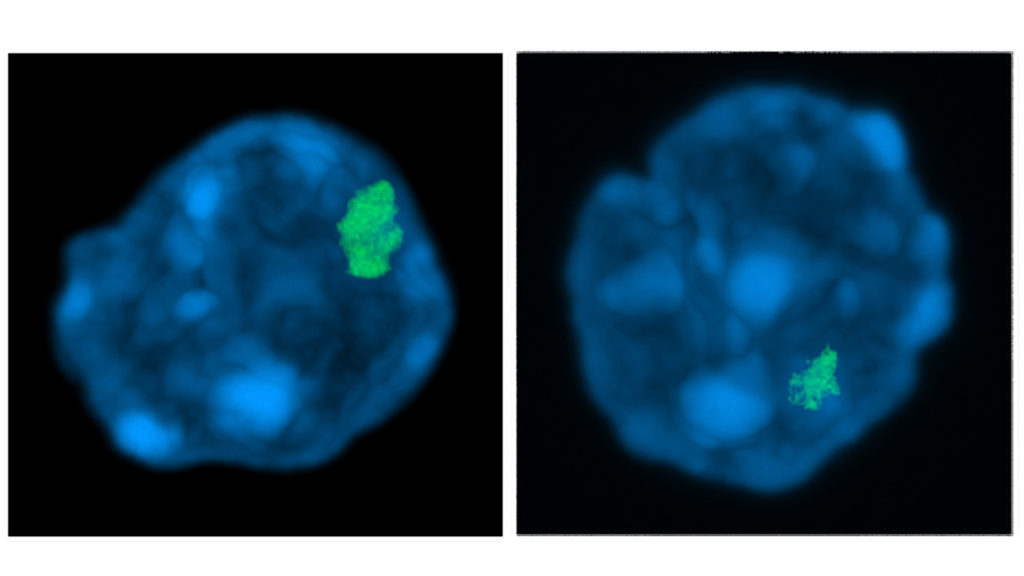In women cells, the expression of chromosome X is silenced to balance gene expression between XX females and XY males. One of the most general mechanisms for gene expression regulation is the distribution of DNA inside the nucleus. In mammalian cells, we distinguish two compartments: euchromatin, located at the center of the nucleus, where the DNA is more relaxed and, the genes presented a high rate of expression; and heterochromatin, at the periphery of the nucleus with compacted DNA and silenced gene expression.
A study led by Dr. Maria Carolina Florian, from Regenerative Medicine Program of Bellvitge Biomedical Research Institute (IDIBELL), and Dr. Medhanie A. Mullaw, from University Hospital Ulm, has demonstrated that the nuclear protein Lamin A/C creates a compartment in the nucleus of young bone marrow stem cells to inactive the chromosome X in female cells.
The study, published at Stem Cell Report, indicates that in aged bone marrow stem cells, the Lamin A/C inactivating compartment is largely reduced, which impairs the chromosome X periphery localization and inactivation. The observations indicate a general relocalization of the “inactivated” chromosome X to more active regions of the nucleus, which correlates with the higher gene expression of these chromosomes in aged cells.
The deregulation of chromosome X inactivation is strongly associated to myelodysplastic syndrome, a group of cancers more frequently affecting elderly people, in which the blood cells do not mature. Therefore, the existence of an age‐dependent alteration of chromosome X inactivation may raise important implications for understanding the physiology of hematopoiesis during aging and the pathogenesis of age‐related hematopoietic malignancies.
The Bellvitge Biomedical Research Institute (IDIBELL) is a biomedical research center created in 2004. It is participated by the Bellvitge University Hospital and the Viladecans Hospital of the Catalan Institute of Health, the Catalan Institute of Oncology, the University of Barcelona and the City Council of L’Hospitalet de Llobregat.
IDIBELL is a member of the Campus of International Excellence of the University of Barcelona HUBc and is part of the CERCA institution of the Generalitat de Catalunya. In 2009 it became one of the first five Spanish research centers accredited as a health research institute by the Carlos III Health Institute. In addition, it is part of the “HR Excellence in Research” program of the European Union and is a member of EATRIS and REGIC. Since 2018, IDIBELL has been an Accredited Center of the AECC Scientific Foundation (FCAECC).

